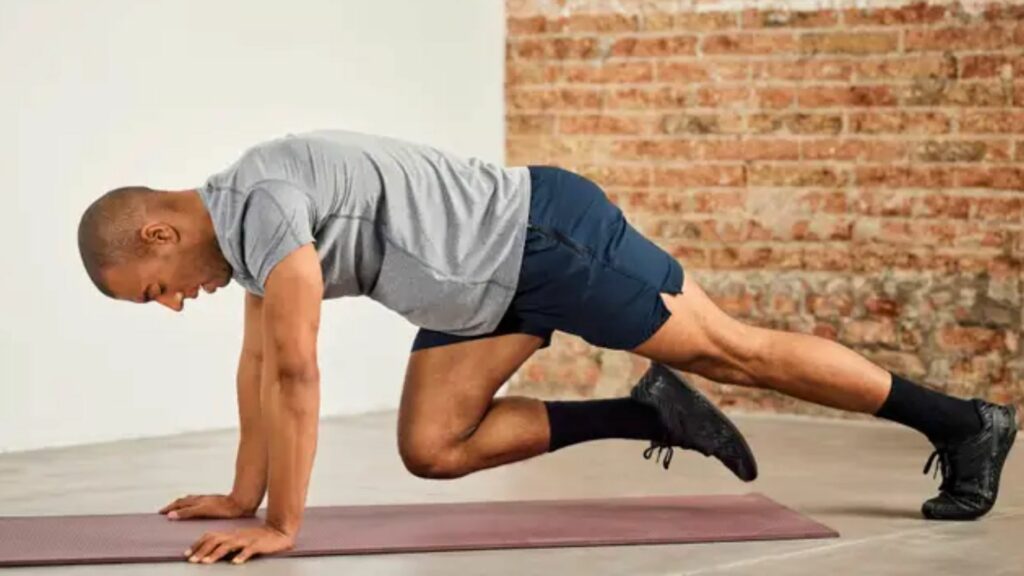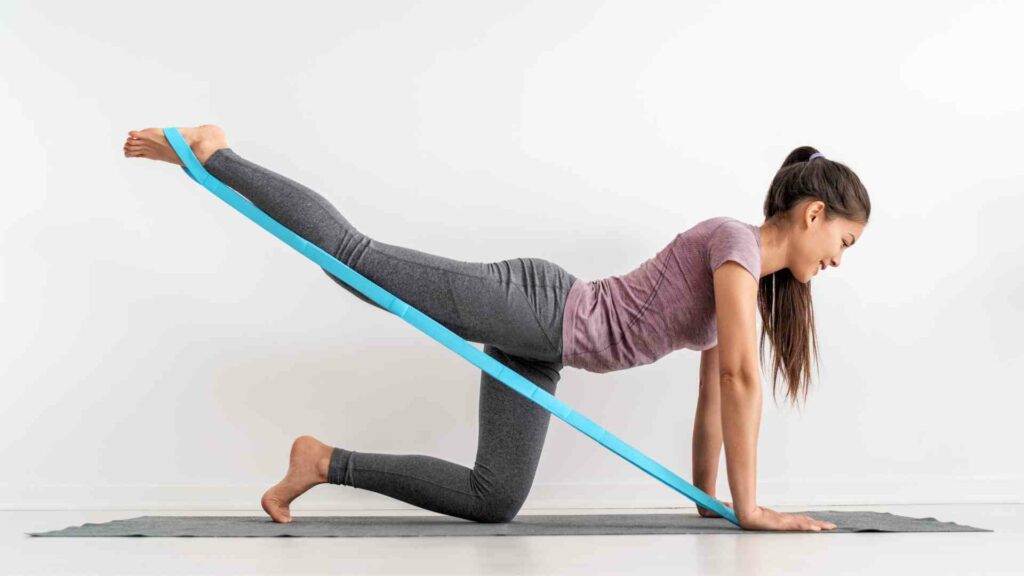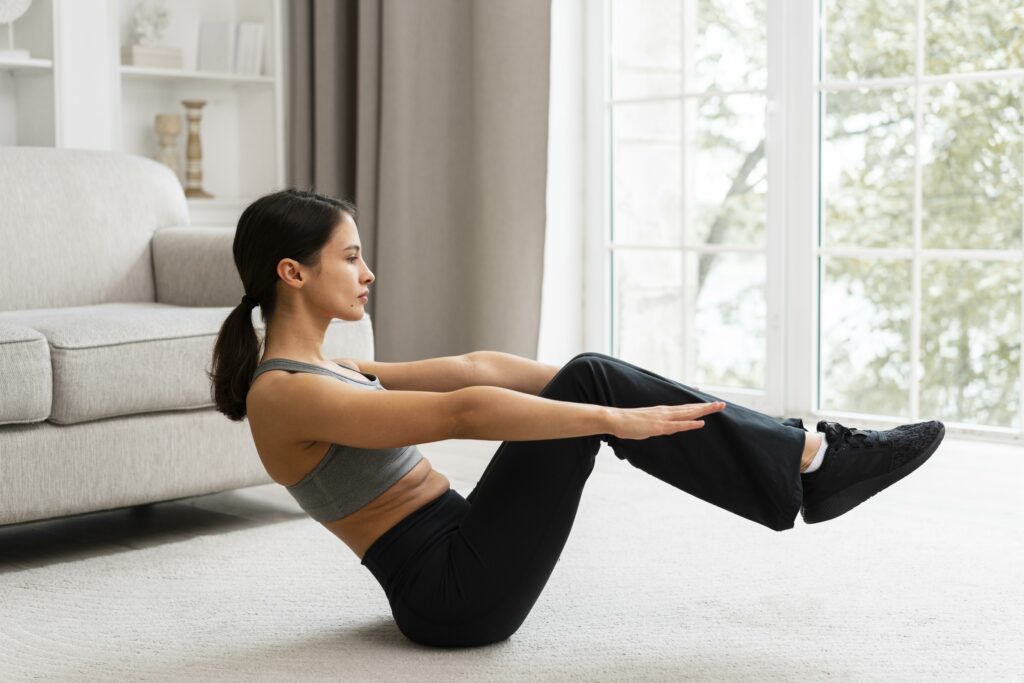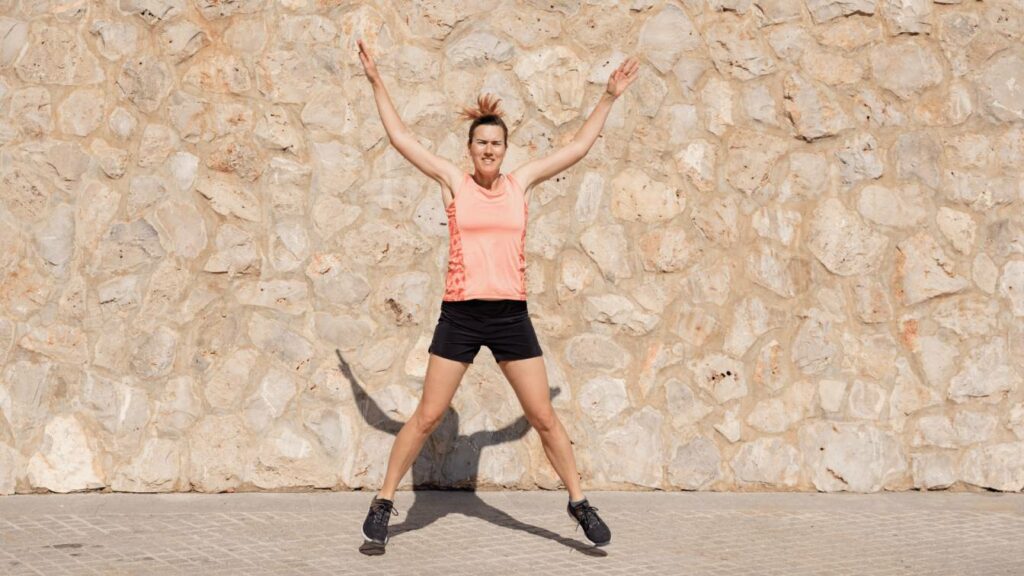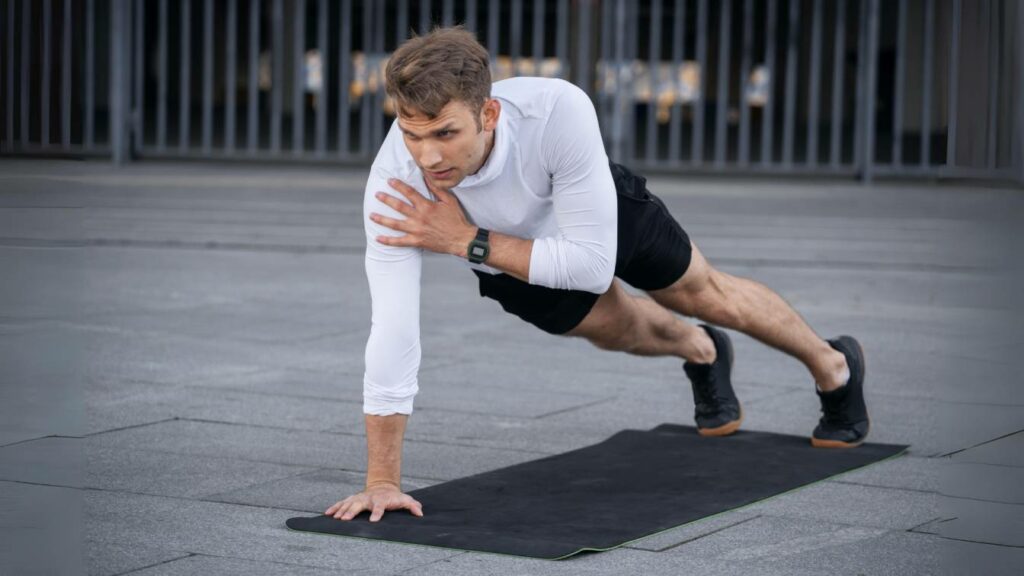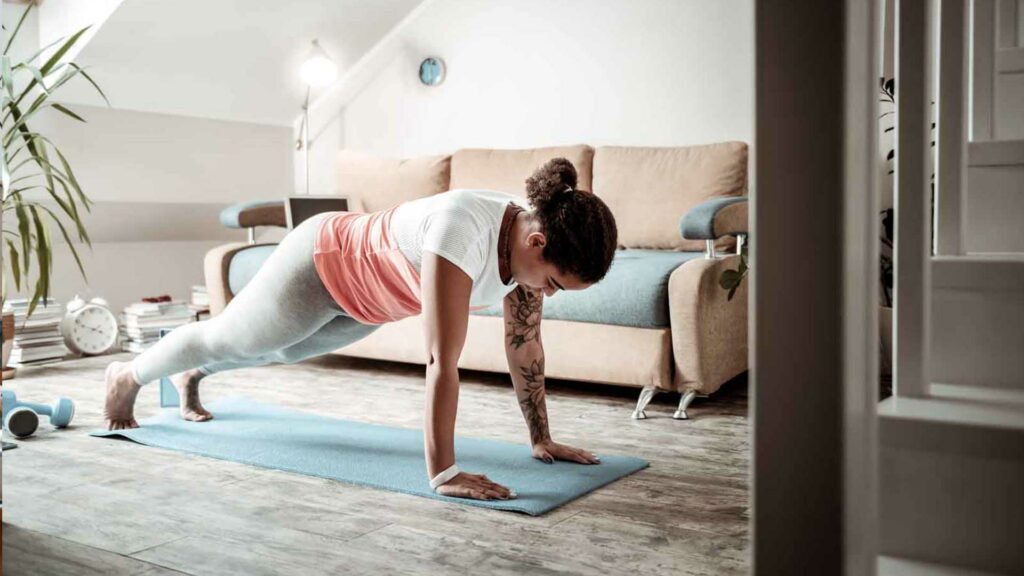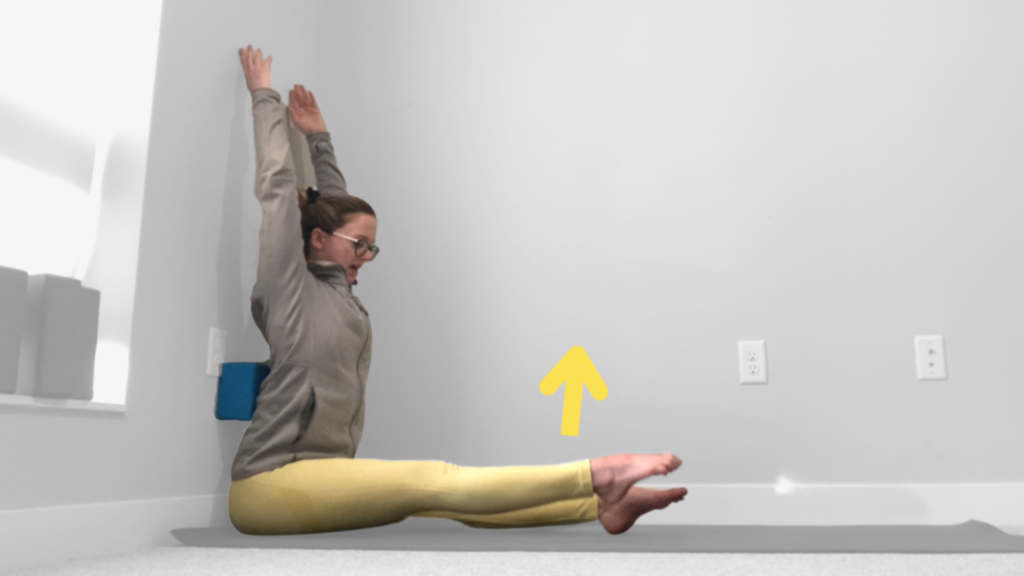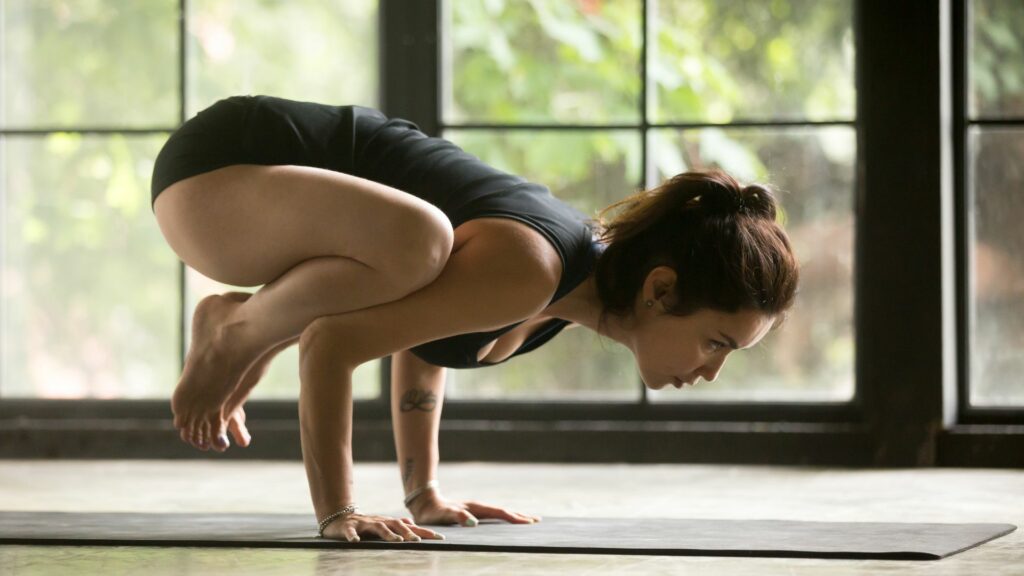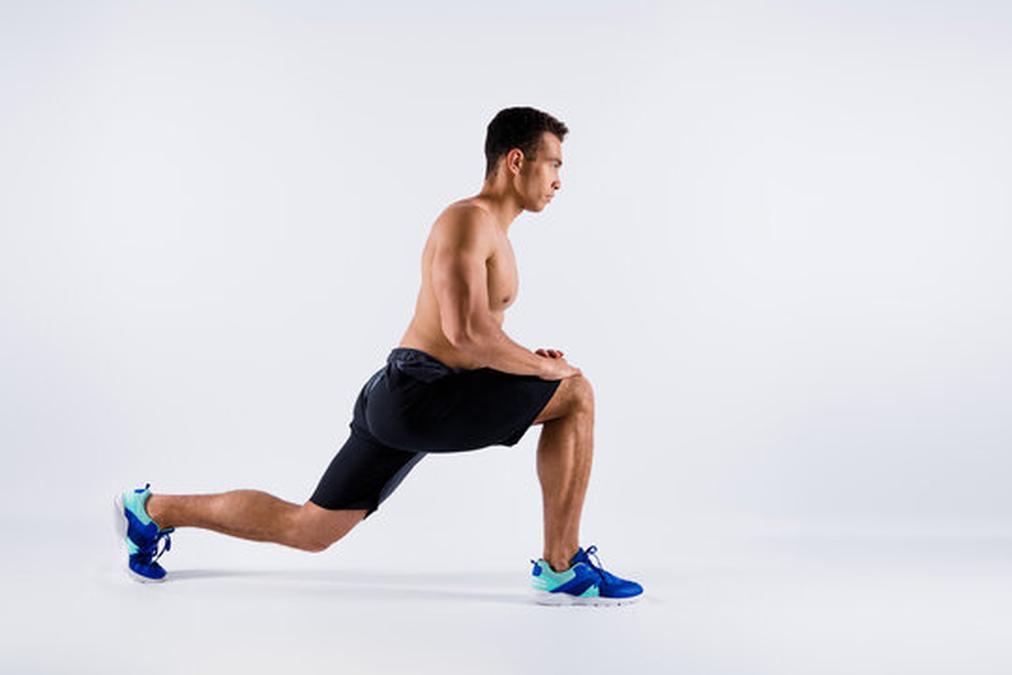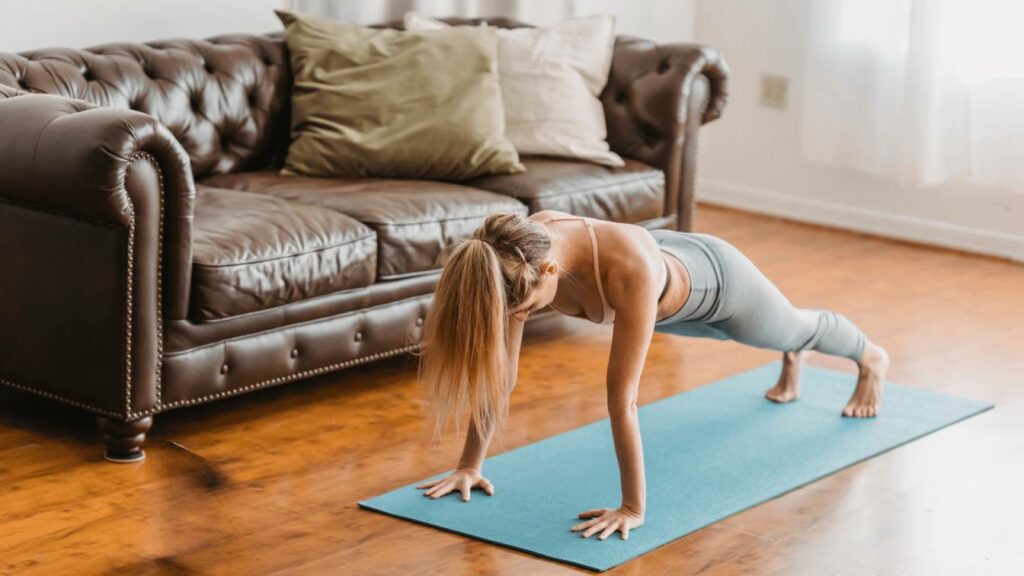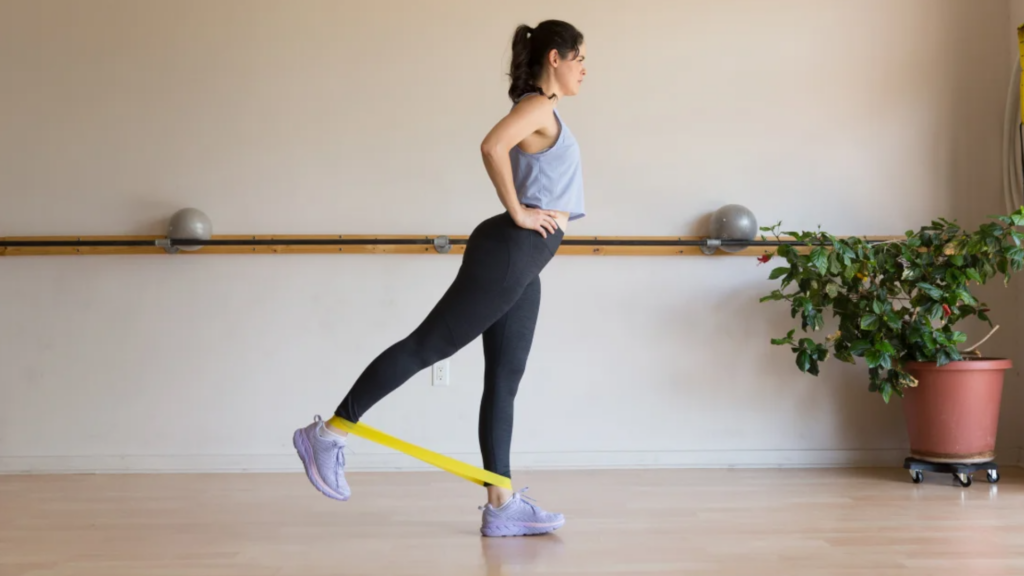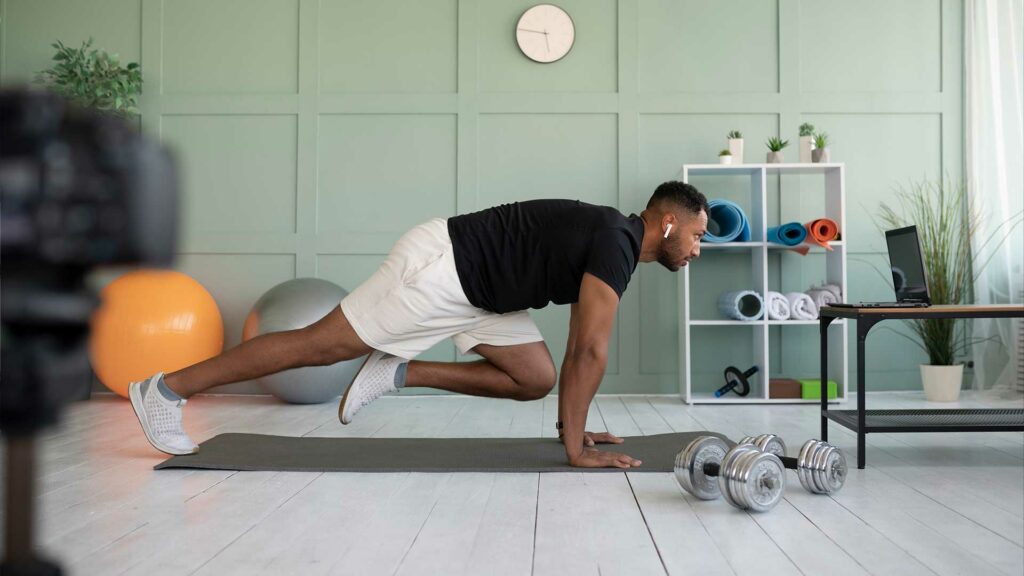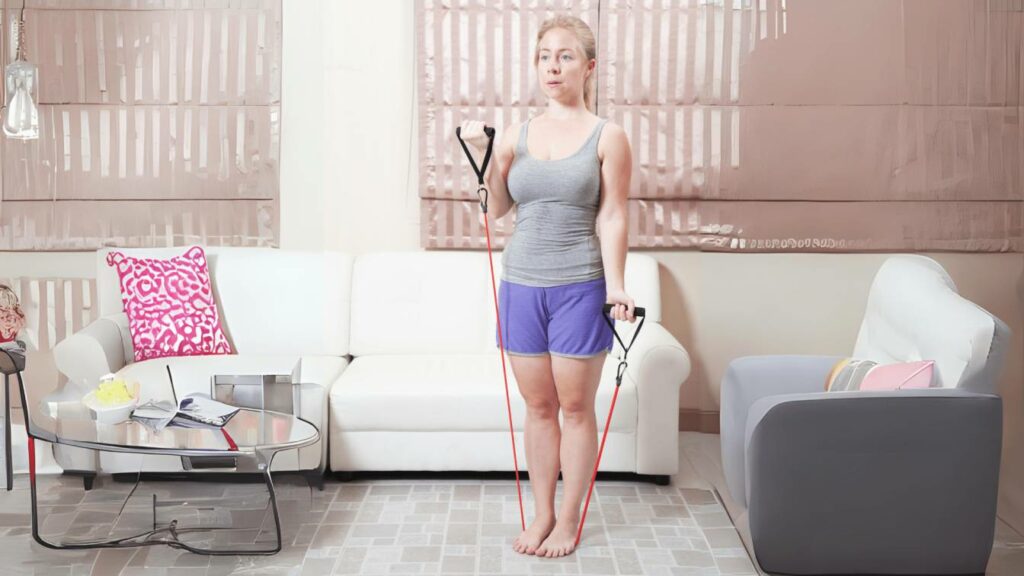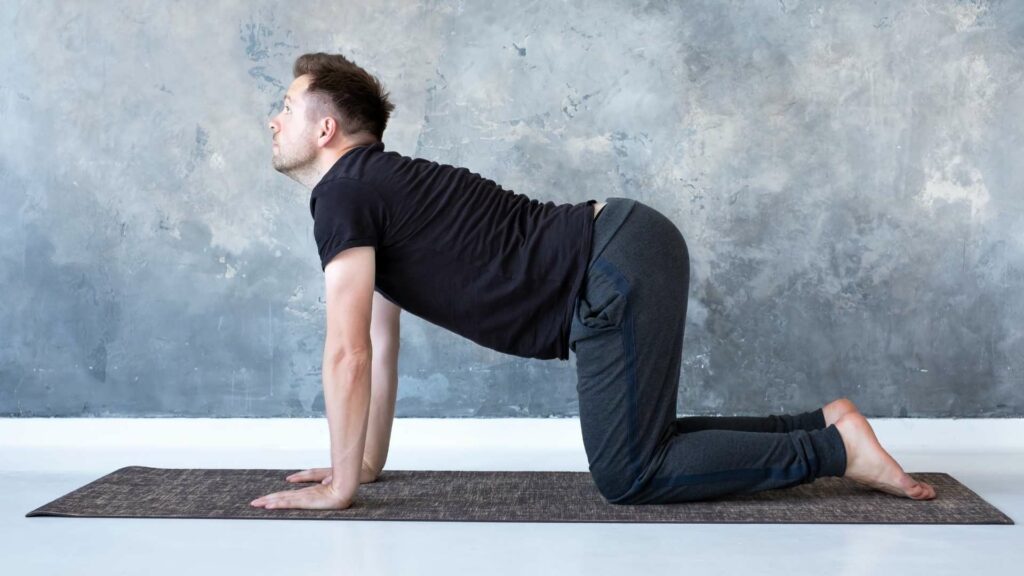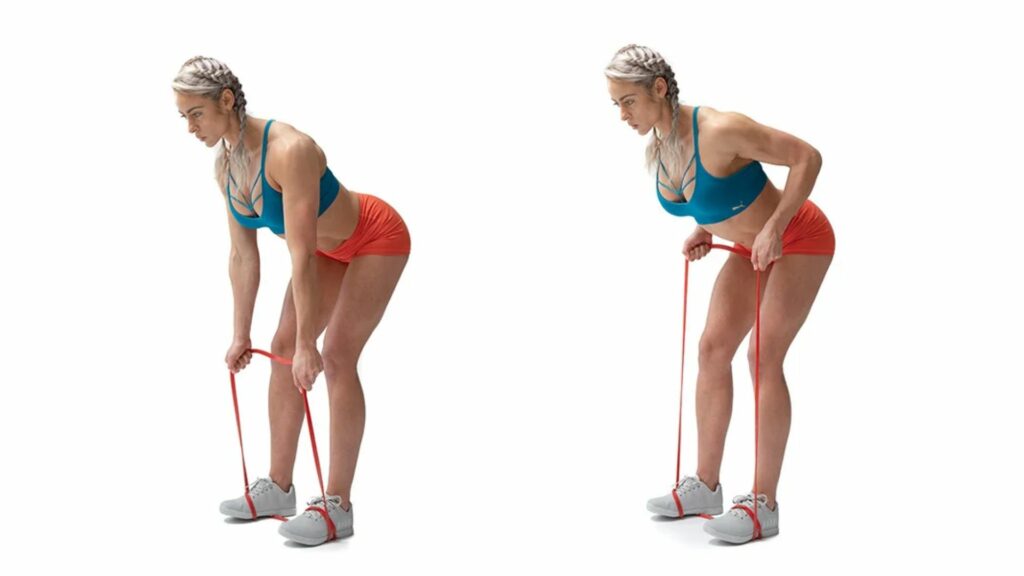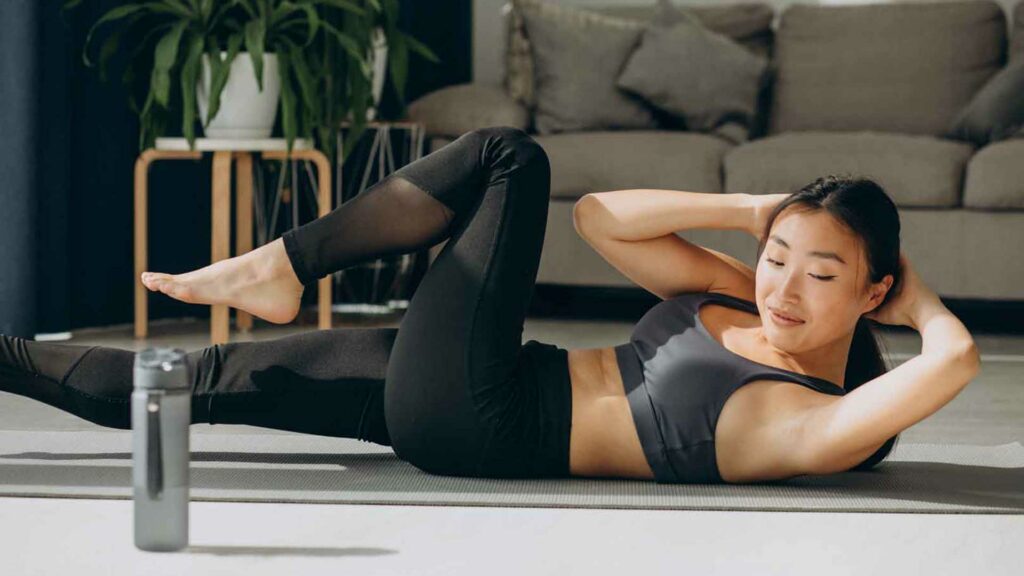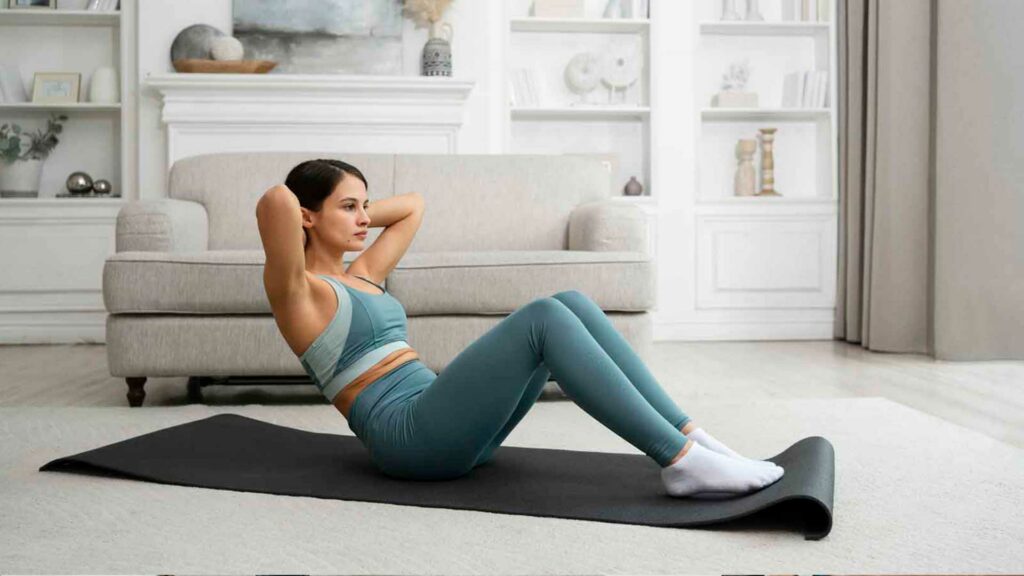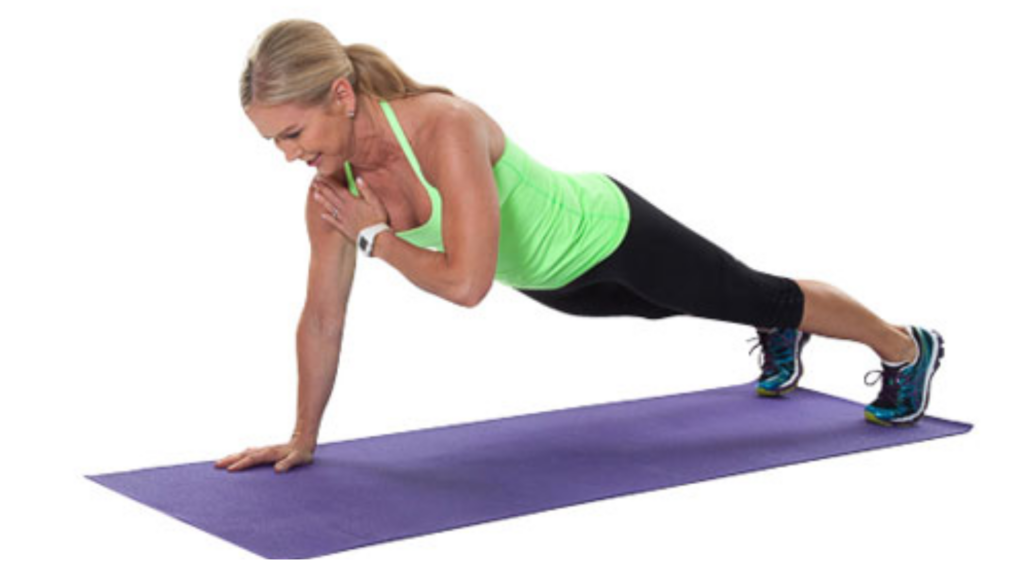Are you looking for a simple yet effective shoulder exercise to add to your fitness routine? Look no further than Merlin’s banded lateral raise exercise. Here is a comprehensive guide to mastering Merlin’s banded lateral raise exercise, including step-by-step instructions, variations and modifications, and real-time feedback with a virtual personal trainer.
Guide to Banded Lateral Raise Exercise
- Banded lateral raise exercise is a shoulder-strengthening exercise that involves using a resistance band.
- The exercise targets the deltoids and other shoulder muscles, helps improve shoulder mobility and posture, and reduces the risk of shoulder injuries.
- The guide covers step-by-step instructions, variations, equipment, sets and reps, frequency, precautions, and injury recovery exercises.
Merlin’s Banded Lateral Raise Exercise
The Merlin App can be a valuable tool for individuals looking to perform banded lateral raise exercises correctly and efficiently. Here’s how the app can assist with this specific exercise:
1. AI Real-Time Feedback:
Banded lateral raises involve lifting resistance bands from your sides to shoulder height, targeting your shoulder muscles. Proper form is crucial to prevent strain and maximize the effectiveness of the exercise. The AI real-time feedback feature in the Merlin App can analyze your movements as you perform banded lateral raises. It provides instant feedback on your form, ensuring that you maintain the correct posture and alignment throughout the exercise. This helps reduce the risk of injury and ensures that you’re effectively targeting the intended muscle group.
2. Customized Workouts:
The Merlin App allows you to customize your workouts based on your fitness level and goals. If you’re new to banded lateral raises, you can start with a beginner-friendly routine. As you progress and build strength, you can adjust the intensity and resistance to match your evolving capabilities. Customizable workout ensures that the exercise is appropriately challenging and aligned with your fitness objectives.
3. Voice Feedback:
During banded lateral raises, maintaining a consistent and controlled movement pattern is essential. The app’s voice feedback feature can provide real-time guidance and motivation. It can help you maintain the right tempo, ensuring that you’re lifting the bands at the correct pace. Voice feedback also reinforces proper technique, helping you get the most out of each repetition.
Muscles Worked
The banded lateral raise exercise primarily targets the lateral deltoid muscles, which are the muscles on the sides of your shoulders. It also engages the anterior deltoid muscles, which are the muscles at the front of your shoulders, and the trapezius muscles, which are the muscles in your upper back.
Benefits of the Exercise
The banded lateral raise exercise provides several benefits for your shoulders and overall fitness:
- Improved shoulder strength: Regularly performing the banded lateral raise exercise can strengthen your shoulder muscles, which can help you perform other exercises with better form and reduce the risk of shoulder injuries.
- Enhanced shoulder mobility: The banded lateral raise exercise can improve your shoulder mobility and range of motion, which can help you perform daily activities with ease.
- Better posture: The banded lateral raise exercise can help you maintain good posture by strengthening the muscles that support your shoulders and upper back.
- Convenience: The banded lateral raise exercise can be performed anywhere, as long as you have a resistance band.
How to Perform the Banded Lateral Raise Exercise Correctly
To perform the banded lateral raise exercise correctly, follow these steps:
- Stand on a resistance band with your feet shoulder-width apart and your arms hanging at your sides.
- Inhale and raise your arms laterally to shoulder height while keeping your elbows slightly bent.
- Hold for a moment at the top of the movement.
- Exhale and slowly lower your arms back down to your sides.
Tips for Proper Form
To ensure proper form during the banded-lateral raise exercise, follow these tips:
- Keep your elbows slightly bent throughout the movement.
- Avoid shrugging your shoulders or arching your back.
- Keep your core engaged to maintain good posture.
- Focus on controlling the movement and avoiding momentum.
Common Mistakes to Avoid
To avoid common mistakes during the banded-lateral raise exercise, be aware of these issues:
- Raising your arms too high: This can put unnecessary strain on your shoulders and lead to injury.
- Using too much resistance: This can compromise your form and make the exercise less effective.
- Moving too quickly: This can cause you to lose control of the movement and increase the risk of injury.
Real-Time Feedback with Virtual Personal Trainer
To ensure that you are performing the banded lateral raise exercise correctly and safely, consider using Merlin, a fitness mobile app with a virtual personal trainer that gives real-time feedback on form and posture. With Merlin, you can learn proper form, get personalized workout plans, and track your progress over time.
Variations and Modifications of Banded Lateral Raise Exercise
By adding variations and modifications to your banded-lateral raise exercise, you can keep your shoulder workout interesting and challenging. Aim to incorporate at least one variation into your workout routine each week.
Single-Arm Banded-Lateral Raise
To add variety to your shoulder workout, try the single-arm banded-lateral raise. In this variation, you perform the same movement as the banded lateral raise exercise, but with one arm at a time. This can help you isolate each shoulder and achieve greater control and range of motion.
Banded Lateral Raise with External Rotation
To target your rotator cuff muscles and improve your shoulder stability, try the banded lateral raise with external rotation. In this variation, you perform the banded-lateral raise exercise, but with your palms facing down and your thumbs pointing forward. As you raise your arms laterally, rotate your arms outward so that your palms face forward at the top of the movement.
Banded Lateral Raise with Pause at the Top
To increase the time under tension and challenge your shoulder muscles, try the banded-lateral raise with pause at the top. In this variation, you hold for a longer moment at the top of the movement before slowly lowering your arms back down to your sides.
Benefits and Instructions for Each Variation
Each variation of the banded-lateral raise exercise provides unique benefits for your shoulders and overall fitness. To learn more about each variation and how to perform it correctly, consult Merlin or a certified personal trainer.
Equipment Needed for Banded Lateral Raise Exercise
There are several types of resistance bands that you can use for the banded-lateral raise exercise, including loop bands, tube bands, and flat bands. Loop bands are the most common and convenient option, as they are easy to use and come in a variety of resistance levels.
Choosing the Right Resistance Level
To ensure that you are using the correct resistance level for your fitness level and goals, consult Merlin or a certified personal trainer. A general guideline is to choose a resistance level that allows you to perform 10-15 repetitions with good form.
Alternative Equipment Options
If you do not have access to resistance bands, you can still perform the banded-lateral raise exercise using dumbbells or kettlebells. However, resistance bands are a more convenient and versatile option, as they can be used anywhere and offer a wider range of resistance levels.
Sets and Reps for Banded Lateral Raise Exercise
To achieve the best results from the banded-lateral raise exercise, aim to perform 3-4 sets of 10-15 repetitions per set. Rest for 30-60 seconds between sets.
How to Progress Over Time
To continue challenging your shoulder muscles and making progress over time, gradually increase the resistance level of your resistance band or the weight of your dumbbells. You can also increase the number of sets or repetitions or try more challenging variations of the banded-lateral raise exercise.
Adjusting Sets and Reps Based on Fitness Goals
If your goal is to build strength and muscle mass in your shoulders, aim to perform fewer repetitions with heavier resistance. If your goal is to improve shoulder endurance and mobility, aim to perform more repetitions with lighter resistance.
| Sets and Reps | Frequency |
|---|---|
| Perform 3-4 sets of 10-15 repetitions per set. | Aim to perform the exercise 2-3 times per week. |
Frequency of Banded Lateral Raise Exercise
To achieve the best results from the banded-lateral raise exercise, aim to perform it 2-3 times per week. This will give your shoulder muscles enough time to recover between workouts and prevent overtraining.
Integrating Banded Lateral Raise into Your Workout Schedule
To integrate the banded lateral raise exercise into your workout schedule, aim to perform it at the beginning or end of your upper body workout. You can also perform it as a standalone exercise or as part of a circuit workout.
Balancing with Other Shoulder Exercises
To ensure that you are working all the muscles in your shoulders and avoiding muscle imbalances, balance the banded lateral raise exercise with other shoulder exercises, such as overhead press, front raise, and rear delt fly.
Precautions and Contraindications for Banded Lateral Raise Exercise
If you have a history of shoulder injuries or shoulder pain, or if you have a shoulder condition such as rotator cuff tendinitis or impingement syndrome, consult a doctor or physical therapist before performing the banded lateral raise exercise. You may need to modify the exercise or avoid it altogether.
How to Prevent Shoulder Injuries
To prevent shoulder injuries while performing the banded lateral raise exercise, warm up properly before starting your workout, use proper form, avoid using too much resistance, and consult a doctor or physical therapist if you feel pain or discomfort in your shoulders.
Injury Recovery and Rehabilitation Exercises
If you are recovering from a shoulder injury or undergoing shoulder rehabilitation, consult a physical therapist for guidance on appropriate exercises and modifications. They may recommend specific exercises to strengthen your shoulders and improve your range of motion.
Conclusion
The banded lateral raise exercise is a simple yet effective way to improve your shoulder strength, mobility, and posture. By following this comprehensive guide, you can perform the exercise correctly and safely, add variations and modifications to your workout routine, and achieve your fitness goals without risking injury. Incorporate the banded lateral raise exercise into your workout routine today, and watch your shoulders transform!
FAQ
What muscles does the banded lateral raise exercise work?
The banded lateral raise exercise targets the shoulders and upper back muscles.
How do I perform the banded lateral raise exercise properly?
Stand with feet shoulder-width apart, hold the band with both hands and lift arms to shoulder height.
Who can benefit from doing banded lateral raise exercise?
Anyone looking to improve their shoulder strength and posture can benefit from this exercise.
What kind of resistance band should I use for banded lateral raise exercise?
A light to medium resistance band is recommended for the banded lateral raise exercise.
How many sets and reps should I do for banded lateral raise exercise?
Aim for 3-4 sets of 12-15 reps of banded lateral raise exercise for optimal results.
What if I don’t have a resistance band for banded lateral raise exercise?
You can use light dumbbells or household items like water bottles as an alternative to resistance bands.



